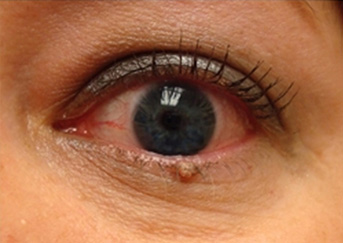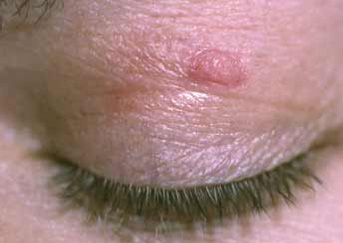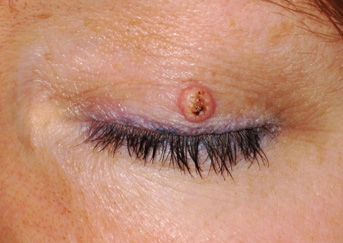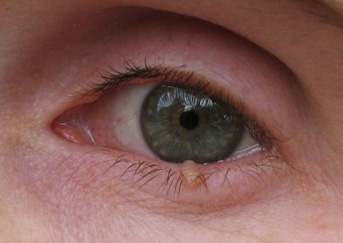Common Eyelid Lesions
The eyelid could be affected by growth or lesion along its surface or its margin. Besides producing unpleasant aesthetic appearance of the eyelid, these growths or lesions could cause an array of symptoms such as foreign body sensation, heaviness pressing against the eyeball, eye redness, ocular discharge, scales, even bleeding just to name a few. Many times these lesions have appearances and behaviors that are similar to eyelid malignancies. Therefore, any growth or lesion in the eyelid must be evaluated by an eyelid specialist to rule out malignancy. Once this is ruled out, these lesions can be easily treated either medically or surgically. Common eyelid lesions include:
Chalazion: is a cystic lesion in the eyelid that is caused by inflammation of a blocked meibomian gland (glands in the eyelid that are responsible in oil production to moderate tear evaporation). Although chalazion usually occurs on the upper eyelid, it could occur in the lower as well. Chalazia differ from styes (hordeola) in that they are subacute and usually painless nodules. They may become acutely inflamed, but unlike a stye, chalazia usually sit inside the lid rather than on the lid margin.
Chalazion in the right upper lid
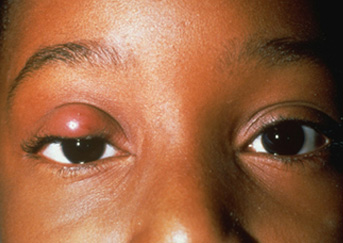
Chalazion in the right lower eyelid
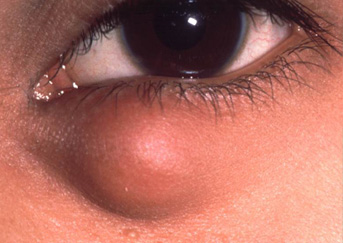
Chalazia viewed from inside the eyelid
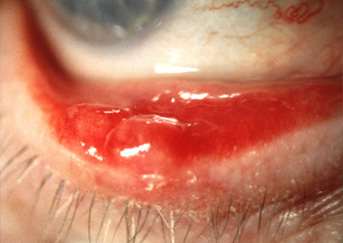
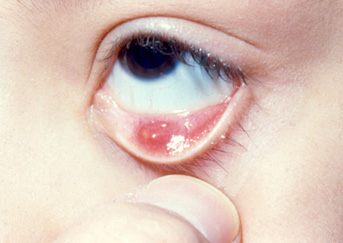
Hordeola or Stye of the upper eyelid (right) and in upper and lower eyelids (left)
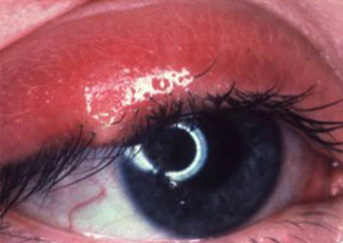
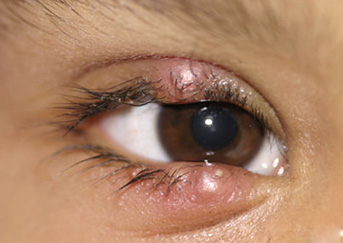
Meimobian cyst: The meibomian glands (glands in the margin of the eyelids, responsible for lipid or fat production to regulate tear film evaporation) can produce cystic lesions that might simulate eyelid malignancy, and it is mandatory an ophthalmic evaluation to discard eyelid cancer.
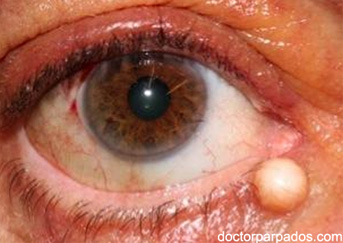
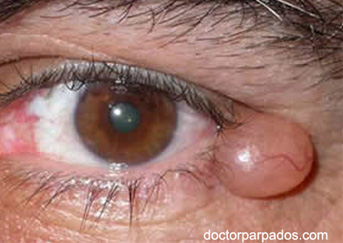
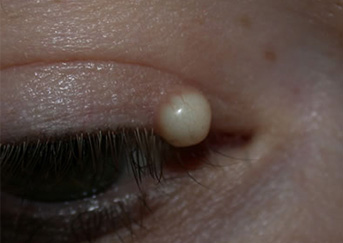
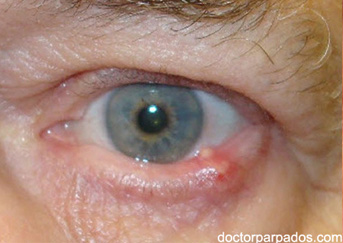
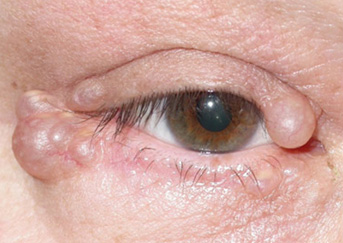
Eyelid wart: these lesions are of viral origin. These can be easily removed as an in office procedure, but clinical evaluation is essential before excision.
